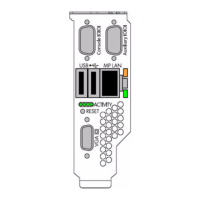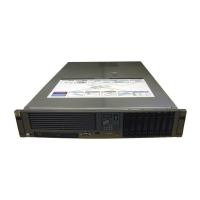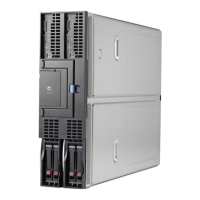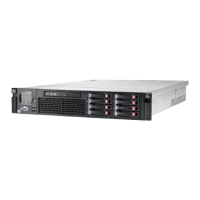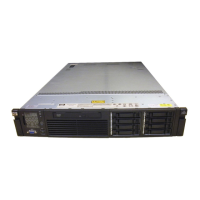Power Quality
This equipment is designed to operate reliably over a wide range of voltages and frequencies,
described in “Enclosure AC Input” (page 47). Damage can occur if ranges are exceeded and
severe electrical disturbances can exceed the design specifications of the equipment. Common
sources of such disturbances are:
• Fluctuations occurring within the facility’s distribution system
• Utility service low-voltage conditions (such as sags or brownouts)
• Wide and rapid variations in input voltage levels or input power frequency
• Electrical storms or large inductive sources (such as motors and welders)
• Faults in the distribution system wiring (such as loose connections)
To protect the system from electrical disturbances, use a dedicated power distribution system,
power conditioning equipment, and lightning arresters on power cables. For assistance, consult
with your HP site preparation specialist or power engineer.
Grounding Systems
The site building must provide a power distribution safety ground/protective earth for each AC
service entrance to all NonStop server equipment. This safety grounding system must comply
with local codes and any other applicable regulations for the installation locale.
For proper grounding/protective earth connection, consult with your Hewlett Packard Enterprise
site preparation specialist or power engineer.
Power Consumption
In a NS2300 system, the inrush currents per connection can vary because of the unique
combination of enclosures housed in the modular rack. Thus, the total power consumption for
the hardware installed in the rack should be calculated as described in “Enclosure Power Loads
for NS2300 Systems” (page 47).
Cooling and Humidity Control
Cooling airflow through each enclosure in the system is front-to-back. Because of high heat
densities and hot spots, an accurate assessment of air flow around and through the system
equipment and specialized cooling design is essential for reliable system operation. For an airflow
assessment, consult with your Hewlett Packard Enterprise cooling consultant or your heating,
ventilation, and air conditioning (HVAC) engineer.
NOTE: Failure of site cooling with the system continuing to run can cause rapid heat buildup
and excessive temperatures within the hardware. Excessive internal temperatures can result in
full or partial system shutdown. Ensure that the site’s cooling system remains fully operational
when the system is running.
Use the “Heat Dissipation Specifications and Worksheet” (page 53) to calculate the total heat
dissipation for the hardware installed in each rack. For air temperature levels at the site, refer to
“Operating Temperature, Humidity, and Altitude” (page 54).
Weight
Total weight must be calculated based on what is in the specific rack, as described in “Rack and
Enclosure Weights With Worksheet” (page 51).
Cooling and Humidity Control 27

